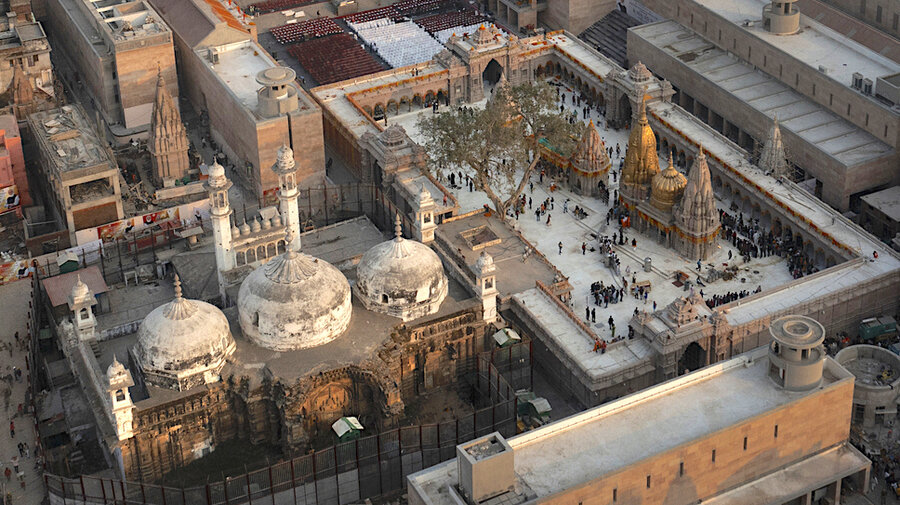Where India rejected violence
Loading...
In the run-up to India’s 75th anniversary of independence in August, and at a time when its founding premise of secular democracy is increasingly frayed, a quiet act of restraint offers a powerful lesson in how the norms and values of a society rest on the decisions of individual citizens.
Early on the morning of April 27, Muslims in the northeastern town of Ayodhya arose to find three mosques and a shrine desecrated by torn pages of sacred Islamic text, raw meat, and threats scribbled on hand-written notes. Triggering insults like those are not uncommon in India, and in Ayodhya they were potentially combustible. Thirty years ago Hindus razed a 16th-century mosque built there on a site they claimed was the birthplace of their deity Rama. The ensuing riots killed more than 2,000 people.
Yet this time Muslims calmly entrusted the matter to the police. That earned the support of an influential Hindu priest and the local member of Parliament from the ruling Hindu-nationalist Bharatiya Janata Party. “I strongly condemn this act,” said Lallu Singh, the MP. “No such activity should be carried out as it can disturb communal harmony.” Seven suspects were arrested, and district leaders started a dialogue with Muslim clerics.
It did not take long to illustrate why the unity forged in Ayodhya matters. A week later, fresh tensions erupted over another historic mosque in Varanasi, Hinduism’s holiest city set on the Ganges River. Hindus say the 17th-century Gyanvapi mosque was built on the site of a demolished temple and demand the right to pray there. Muslim worship has since been limited on the site while a district court investigates the claims. Meanwhile the city remains on edge.
Across India, the targeting of mosques and destruction of Muslim neighborhoods coincide with policies of the government of Prime Minister Narendra Modi that are redefining the nation and its concept of citizenship on the basis of religion. Hindus make up roughly 80% of the population. Since 2014 the BJP has championed the Hindu nationalist view – forged in part in the Ayodhya mosque riots three decades ago – that Muslims are second-class citizens who rightfully should live in Pakistan. India’s northern neighbor was established as an Islamic republic when the subcontinent was partitioned at independence from British rule in 1947.
In recent years the rights of Muslims have been increasingly eroded. Since 2015, the year after Mr. Modi was first elected, a handful of states have outlawed beef – a staple of the Muslim diet in a country where cows are held as sacred by the Hindu majority. The laws impose lengthy jail sentences for slaughtering the animals. In 2018, states began enacting laws effectively banning interfaith marriage. And in 2019, the government passed the Citizen Amendment Act, which specifically excluded Muslims from special rights granted to immigrants of other religious backgrounds.
The cumulative effect of these laws, writes Niraja Gopal Jayal, a professor at King’s College London, in a newly published paper in the journal Studies in Indian Politics, “is an attempt to construe Indian citizenship as faith-based.”
In the increasingly fractured and openly tense atmosphere that this has created, Muslims and Hindus in Ayodhya showed that rejecting violence can have a unifying effect. When that is motivated by common spiritual principles, it can ennoble societies to renew their highest defining ideals.





